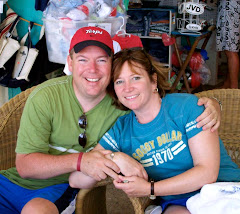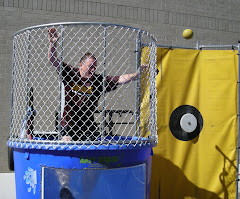July 30, 2011
Being anal retentive may not win you friends, but it sure pays off in the classroom where you're doomed if you're disorganized. Yet even if you're not a neat freak by nature, you can maximize teaching and learning time by disorganization-proofing your classroom. I previously suggested you do this by wearing everyday supplies in a tool belt--or smock or whatever suits your style. And now some suggestions for managing everyday paperwork.
Between lesson plans, handouts, student work, notes from parents, permission slips, and main-office mail, most teachers are swamped with papers every day--even in today's world of cloud computing, mobile technology, and electronic gradebooks. So many papers from so many people and places that it's hard for even the tidiest teachers to keep those papers from piling up. That's why a lot of teachers' desks look like they've just been ransacked, and why a lot of teachers are leafing through stacks of paper when they should be teaching. To prevent such inefficiency, you need a system for processing all those papers. Not just a couple of trays that make your desk look neater, but a system that lets you focus more on teaching and less on handling or searching for documents. Here are some components of such a system:
http://blogs.edweek.org/teachers/coach_gs_teaching_tips/2011/07/the_deskless_teacher.html
Another great article from MiddleWeb's Of Particular Interest! Thanks!
Between lesson plans, handouts, student work, notes from parents, permission slips, and main-office mail, most teachers are swamped with papers every day--even in today's world of cloud computing, mobile technology, and electronic gradebooks. So many papers from so many people and places that it's hard for even the tidiest teachers to keep those papers from piling up. That's why a lot of teachers' desks look like they've just been ransacked, and why a lot of teachers are leafing through stacks of paper when they should be teaching. To prevent such inefficiency, you need a system for processing all those papers. Not just a couple of trays that make your desk look neater, but a system that lets you focus more on teaching and less on handling or searching for documents. Here are some components of such a system:
This system for organizing papers will not only improve instructional efficiency but may also--in combination with a tool belt or other means of wearing everyday supplies--make your desk so dispensable that you'll want to do what I did: get rid of it. Of course, a classroom without a teacher's desk will seem strange to students and visitors, so expect lots of questions about its whereabouts. No problem, though. Just hitch up your tool belt--or tug at your smock or vest--and tell the truth: "My desk? I'm wearing it."
- In- and out-trays for student work. Arrange two sets of stackable trays, one for students to turn papers in on
their way in and out of class (and for you to place papers in that you collect during class) and the other for you to store graded papers until you return them, on a table along the side wall near the entrance to your classroom. You'll need a pair of trays for each class period or for each subject if you teach in a self-contained classroom.
- Folders for daily instructional documents. Tape heavy duty expandable file folders, one per subject you teach, to the sides of your projector cart if you have one--otherwise go with a table or the side of a file cabinet. At the start of each day, load the folders with lesson plans, handouts, and any other documents you'll need during class that day--separated by dividers inside each folder. This simple idea will do for your daily documents what a tool belt will do for your daily supplies: move them from a remote cabinet or cluttered desk to your fingertips.
- Containers for administrative documents. Arrange a row of trays or baskets on a table near the entrance to your classroom. Or, better yet,
prevent trays/baskets from being knocked over and save floor space by mounting plastic wall file holders--available at most office supplies stores--to the wall. You'll need a separate container for each category of administrative papers. Here's a possible breakdown:
- Students - Urgent. Notes from parents, field trip permission slips, and any other papers students need you to return to them by the end of class. Instruct students to deposit these documents into this box instead of dropping them on your desk or handing them to you. Then, at an opportune time, you can retrieve, review, and return these papers.
- Students - Non-urgent. Tardy slips and any other papers submitted by students for your records only. Again, instruct students to place these papers directly into this container so that you don't misplace them or waste class time handling them.
- Miscellaneous - Urgent. Memos, phone messages, and any other papers from your mailbox that require your prompt attention, but not during class time.
- Miscellaneous - Non-urgent. Magazines, brochures, newsletters, handouts from workshops, and any other materials that you'd like to read or file but are not time-sensitive.
- Calendar and containers for past assignments and handouts. Students returning from absences are entitled to know what you covered while they were gone. They should not, however, be entitled to interrupt you or their classmates to get caught up. Some teachers prevent this by maintaining a class website where students can access assignments. But if students can't always access your website or you don't have one, consider recording lesson topics and assignments (color coded for each subject) on a monthly planning calendar along the side wall near the entrance to your classroom. Be sure to laminate your calendar so that you can erase
and update information using wet-erase markers. Next, set up boxes or wall file holders, one per subject, beneath the calendar. Each time you distribute a handout in class, file extra copies in a folder within the proper box or file holder. Now when students return from absences, they just need to refer to the calendar to see what assignments they missed, and reach into the appropriate folder to obtain them.
- Mail folders for homeroom students. If you oversee a homeroom, you're likely to get as much mail addressed to your homeroom students as to you. To separate students' mail from yours, set up a box or wall file holder with an individual folder for each homeroom student in alphabetical order. Now, instead of distributing mail to students during homeroom, file it in their folders so they can pick it up themselves. This not only gives you one less task to squeeze into hectic homeroom periods, but also frees you from having to hold onto--and forget about, if not lose--mail for students who are absent.
http://blogs.edweek.org/teachers/coach_gs_teaching_tips/2011/07/the_deskless_teacher.html
Another great article from MiddleWeb's Of Particular Interest! Thanks!



















No comments:
Post a Comment